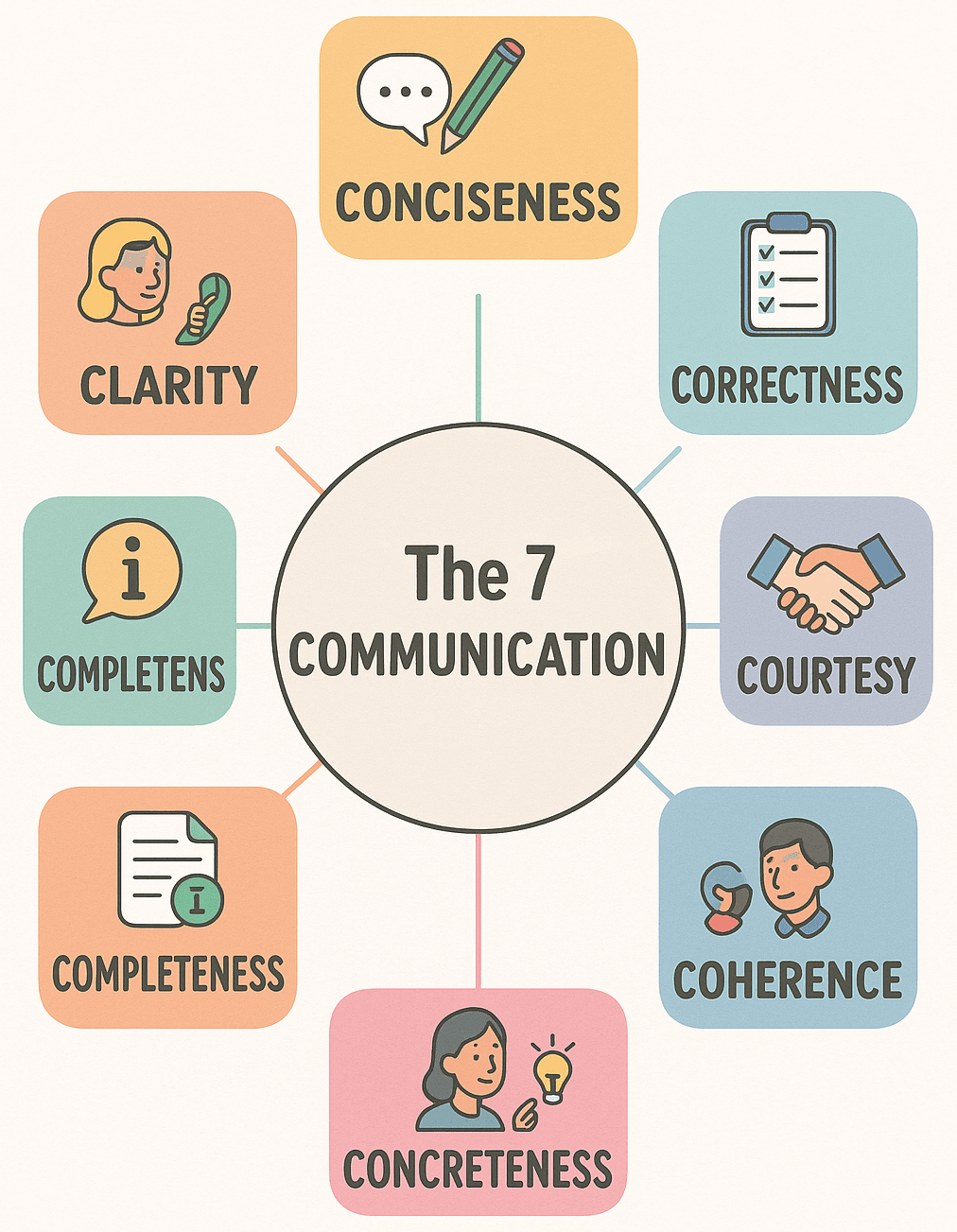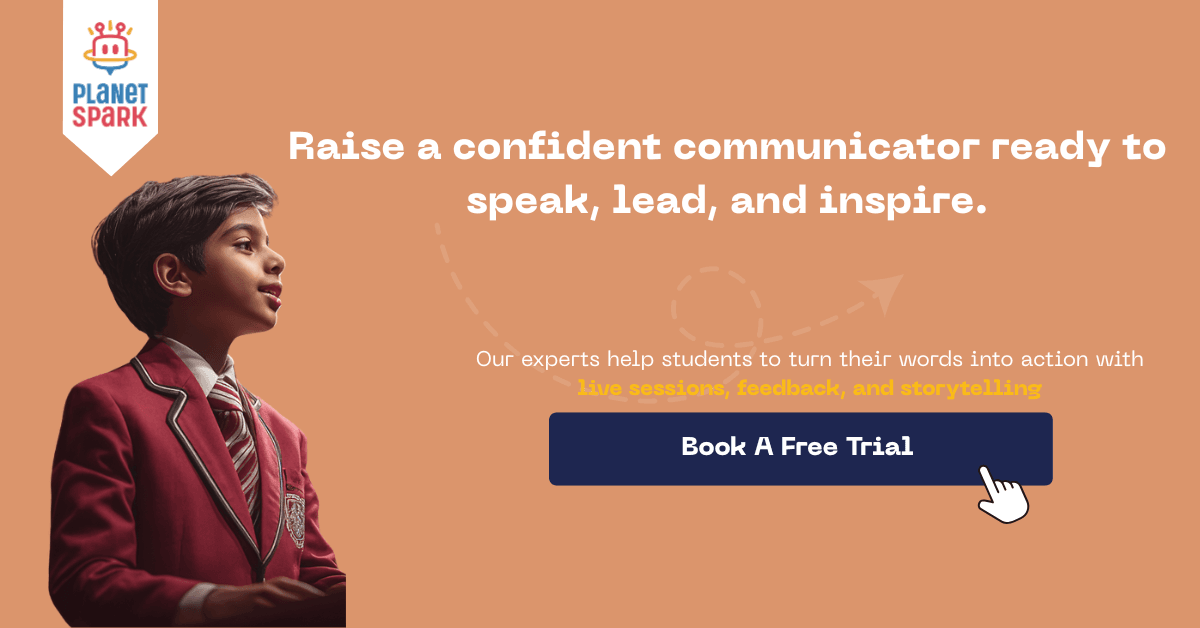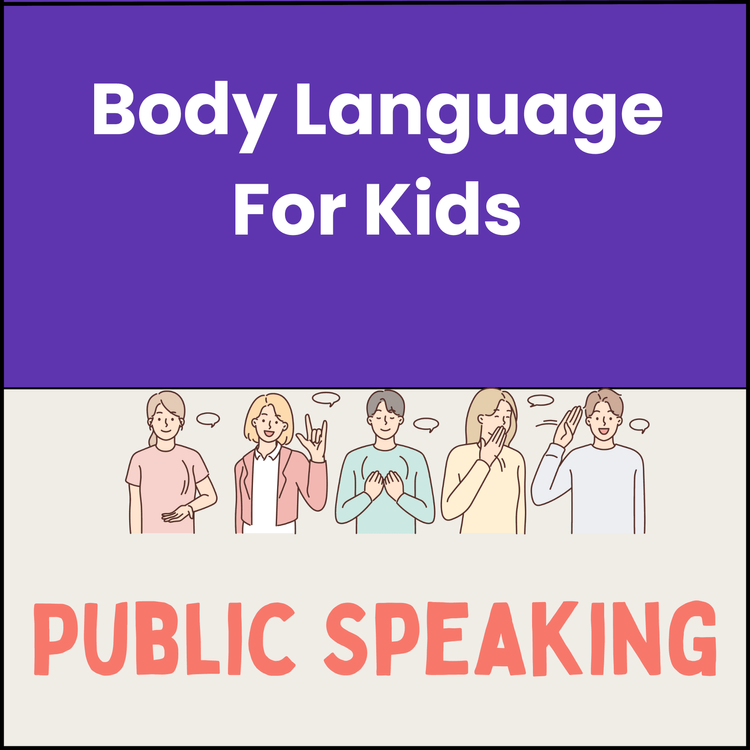7 Cs of Communication: Improve your Communication Skills

Table of Contents
- The 7 Cs of Communication with Examples
- How the 7 Cs Work Together: Integration in Action
- Why the 7 Cs Matter in Everyday Life
- Why the 7 Cs of Communication Are Important for Kids
- Common Challenges in Applying the 7 Cs of Communication
- How PlanetSpark Helps Kids Master the 7 Cs of Communication
- Conclusion
- FAQs on the 7 Cs of Communication
trong communication is more than just speaking clearly, it’s about expressing thoughts confidently, understanding others, and building meaningful connections. For children, mastering this skill early can unlock doors in academics, friendships, leadership, and future careers.
In a world that’s becoming more interactive and fast-paced, platforms like PlanetSpark are nurturing the next generation of confident communicators by making learning fun, personal, and practical.
Now let’s explore one of the most powerful tools for clear communication: the 7 Cs framework.
The 7 Cs of Communication with Examples
The 7 Cs of communication help children speak and write in a way that is easy to understand, effective, and engaging. Let’s break each one down with examples your child can relate to.
1. Clarity
Clarity is the foundation of all effective communication. When children express their ideas with clarity, their listeners or readers can easily understand what they mean. This is especially important in both spoken and written communication, where even a small misunderstanding can lead to confusion.
In the context of the 7 Cs of communication, clarity means using simple, direct language that conveys your message. It involves choosing the right words and structuring your sentences in a way that avoids ambiguity. Children who learn to speak with clarity become more confident because they know their audience understands them.
Why Clarity Matters:
- It ensures that the listener or reader grasps the message without having to guess.
- It builds trust and credibility, especially during speeches or presentations.
- It reduces the chance of misinterpretation or errors.
Example:
Let’s look at a sentence that lacks clarity:
“The culmination of our academic year shall be observed on the 25th.”
This may sound impressive, but it’s too complex for most listeners, especially other children. A clearer way to say the same thing is:
“Our school year will end on the 25th.”
This version is short, simple, and to the point. The message is instantly understood, which is exactly what clarity in communication is all about.
Teaching kids to be clear helps them in school, at home, and in social situations. Whether they’re answering a question in class or giving a speech, the habit of using clear language makes a big difference.

Book a free demo class and help your child master the 7 Cs of effective communication.
2. Conciseness
Conciseness means saying what you need to say using the fewest words possible, without losing the meaning. In the 7 Cs of communication, conciseness is about trimming away extra or repetitive words so that the message stays clear and focused.
When children speak or write concisely, they hold the listener’s attention and avoid confusion. In a world full of distractions, especially in classrooms and online platforms, getting to the point quickly helps the message stand out.
Why Conciseness Matters:
- It respects the audience’s time and attention span.
- It reduces the risk of your main point being buried under too many words.
- It makes conversations, speeches, and writing more powerful and memorable.
Example:
Too wordy:
“Due to the fact that we were late in leaving, we ended up missing the beginning of the play.”
Concise version:
“We left late and missed the beginning of the play.”
The second version keeps the meaning but says it more efficiently. This is what conciseness in communication teaches children, how to speak with purpose, not just with words.
Helping your child develop this skill early will prepare them to become impactful speakers and writers in school debates, storytelling sessions, and everyday communication.
3. Correctness
Correctness means using the right grammar, facts, and language while speaking or writing. In the 7 Cs of communication, correctness builds trust. When your information is accurate and your sentences are well-formed, people are more likely to listen and believe what you say.
For children, developing this habit early helps them avoid miscommunication and builds their confidence. Whether it’s a school speech or an email to a teacher, correctness shows that they are careful and thoughtful communicators.
Why Correctness Matters:
- It improves your child’s credibility and helps people take them seriously.
- It ensures the message is understood as intended.
- It teaches responsibility; what you say or write reflects you.
Example:
Incorrect:
“There is too many students in the class today.”
Correct:
“There are too many students in the class today.”
Incorrect information:
“Sharks are mammals.”
Correct information:
“Sharks are fish.”
By encouraging correctness in communication, children learn to double-check facts, proofread their work, and speak with clarity and authority.
4. Concreteness
Concreteness means being specific and using clear details instead of vague or general language. In the 7 Cs of communication, concreteness helps make your message more memorable, impactful, and easier to understand. When children learn to use real examples or facts in their speech or writing, their communication becomes stronger and more convincing.
This is especially helpful when kids are giving speeches, writing essays, or making presentations. A concrete message avoids confusion and leaves no room for doubt.
Why Concreteness Helps:
- It paints a clear picture for the listener or reader.
- It makes your communication more powerful and easier to act upon.
- It helps the audience remember your message.
Example:
Vague: “The trip was fun.”
Concrete: “We went to the Science Museum on Saturday and saw a real dinosaur skeleton. My favorite part was the space exhibit.”
Vague: “We need to improve our environment.”
Concrete: “We can reduce plastic use by carrying cloth bags, using steel bottles, and planting trees in our neighbourhood park.”
When children practice concreteness in communication, they learn to support their ideas with facts, examples, or real-life references, making them more effective and impressive speakers and writers.

Let your child learn the art of clear and confident communication.
Book a Demo Now!
5. Consideration
Consideration means thinking about your audience before you speak or write. In the 7 Cs of communication, this skill encourages empathy and emotional intelligence. Children learn to choose words that are respectful, age-appropriate, and relevant to the listener’s point of view.
When kids consider their audience, be it classmates, teachers, or a group of parents, they naturally adjust their tone, examples, and language to connect better. This helps them become more thoughtful and persuasive communicators.
Why Consideration Matters:
- Builds trust and mutual respect.
- Reduces chances of misunderstandings.
- Makes communication more inclusive and audience-friendly.
Example:
Without consideration: “You should already know this; it’s so easy.”
With consideration: “Let me explain it again in a simpler way.”
Without consideration: “Old people don’t understand how to use technology.”
With consideration: “Sometimes, older people may need help using new technology.”
By practising consideration in communication, children learn to speak with kindness, listen with empathy, and express themselves without hurting or excluding others.
6. Courtesy
Courtesy means using polite and respectful language, even when you're nervous, upset, or trying to make a strong point. As the final part of the 7 Cs of communication, it ensures that your message is not only heard but also well-received.
Teaching kids courtesy in speech helps them stay calm, positive, and respectful in conversations, even during disagreements. A courteous communicator avoids sarcasm, rudeness, and dismissive tones, replacing them with kind words and respectful gestures.
Why Courtesy Is Important:
- Helps children form better relationships.
- Encourages active listening and open dialogue.
- Makes others feel respected and included.
Example:
Without courtesy: “Move, you’re in my way.”
With courtesy: “Excuse me, could I please get through?”
Without courtesy: “That’s a terrible idea.”
With courtesy: “Maybe we can think of a few other ideas too?”
When children use courtesy in communication, they gain the confidence to express themselves while making others feel valued, a key to success in school, friendships, and future leadership roles.
7. Coherence
Coherence means that your message should flow smoothly, with ideas arranged logically so the listener or reader can follow your point without getting confused. Each sentence should connect naturally to the next, and your communication should have a clear structure, beginning, middle, and end.
When your speech or writing lacks coherence, it feels like jumping from one topic to another without a clear path. This can make your audience lose interest or misunderstand your message.
Example:
Instead of saying,
"We visited the park. The movie starts at 6. I like ice cream."
Say,
"We visited the park in the evening, and afterward, we plan to watch a movie that starts at 6. I hope we have time to grab ice cream on the way."
This version ties all the ideas together into a coherent, easy-to-follow message.
How the 7 Cs Work Together: Integration in Action
The 7 Cs of communication: Clarity, Conciseness, Concreteness, Correctness, Consideration, Completeness, and Courtesy, are not just individual skills. They become powerful when used together in daily conversations.
Let’s take an example. Aarav is inviting his classmates to a science fair.
Without the 7 Cs:
“Hey, um, there’s this thing at school... I guess it's on Friday? You can come if you want, I think it's cool.”
This message is unclear and uncertain. It lacks important details and does not show confidence.
With the 7 Cs:
“Hi everyone! Our school is hosting a Science Fair on Friday at 10 a.m. in the main hall. I’m presenting a project on solar energy. I’d love for you all to come and see it!”
This version shows:
- Clarity: Uses simple and direct language.
- Conciseness: Shares the message quickly without extra words.
- Concreteness: Gives clear details like time and place.
- Correctness: Shares accurate and grammatically correct information.
- Consideration: Thinks about the listener’s interest.
- Completeness: Covers all necessary information.
- Courtesy: Sounds polite and respectful.
When students learn to combine all these qualities, they become confident speakers and great communicators, ready for every opportunity that comes their way.

Is your child struggling to express ideas clearly? Let PlanetSpark simplify the art of communication.
Book a Demo Now!
Why the 7 Cs Matter in Everyday Life
Whether your child is chatting with friends, asking a teacher a question, or giving a class presentation, strong communication makes everything smoother. That’s where the 7 Cs come in.
Here’s why they matter in day-to-day life:
They help kids express themselves better.
Clear and complete communication means fewer misunderstandings, more confidence, and better relationships.
They build strong classroom habits.
When students speak with clarity and courtesy, teachers and peers are more likely to listen and respond positively.
They prepare children for real-world challenges.
Whether it's writing emails, answering interviews, or working in teams, using the 7 Cs makes communication more effective and professional.
They reduce confusion and conflict.
Being concrete and correct helps avoid mixed messages that can lead to disagreements.
They make your child stand out.
In a world full of distractions, a communicator who is concise, complete, and respectful truly shines.
Good communication is not just about talking. It’s about connecting, understanding, and building trust. Mastering the 7 Cs gives your child a lifelong edge, inside the classroom and far beyond.
Why the 7 Cs of Communication Are Important for Kids
Good communication is more than just speaking. It is about making others understand your thoughts clearly and respectfully. For kids, learning the 7 Cs of communication at a young age builds a strong foundation for school, friendships, and future success.
Here’s why the 7 Cs matter for children:
Builds self-confidence:
When kids know how to express their ideas clearly and correctly, they feel more confident in classroom discussions, debates, and daily conversations.
Improves learning and participation:
Children who communicate with clarity and completeness are more likely to ask questions, share opinions, and stay involved in group activities.
Encourages respectful behavior:
Using the Cs like Courtesy and Consideration helps kids become thoughtful speakers and active listeners.
Strengthens friendships and social skills:
Clear and concrete communication reduces misunderstandings, helping kids connect better with peers and form healthy relationships.
Prepares for future challenges:
Whether it is public speaking, writing, or teamwork, mastering the 7 Cs gives kids the tools they need to succeed in every area of life.
By developing these communication habits early, children become better thinkers, speakers, and leaders in school and in life.
Common Challenges in Applying the 7 Cs of Communication
While the 7 Cs of communication are easy to understand, putting them into practice can be tricky, especially for kids who are still learning how to express themselves. Here are some of the most common challenges children face:
| Challenge | What It Looks Like | Why It Matters |
|---|---|---|
| Clarity | Using long or complicated words when simple ones will do. | Listeners may get confused or lose interest. |
| Conciseness | Adding too many details or going off-topic. | It makes the main message harder to follow. |
| Concreteness | Speaking in vague or general terms. | The listener may not fully understand what is being said. |
| Correctness | Making grammar or pronunciation errors. | Mistakes can distract from the message or make it unclear. |
| Coherence | Jumping between ideas without clear connection. | The listener may feel lost or overwhelmed. |
| Completeness | Leaving out important details or forgetting to answer questions. | The message feels unfinished or confusing. |
| Courtesy | Speaking without considering the feelings of others. | It can seem rude and may affect friendships or teamwork. |

How PlanetSpark Helps Kids Master the 7 Cs of Communication
At PlanetSpark, communication is more than just speaking. It is about helping children become confident, clear, and creative individuals. Our programs are designed to help children understand and apply the 7 Cs of communication in daily life, classroom interactions, and public speaking.
Here’s how PlanetSpark supports your child’s communication journey:
- 1:1 Personalised Classes: Every child has a unique learning style. Our certified communication trainers offer individual attention and customise lessons to match each child’s pace and personality.
- Live Feedback and Practice: Children receive real-time suggestions and corrections to improve clarity, correctness, and confidence during each session.
- Gamified Learning Tools: Activities and games help children express themselves more completely, courteously, and concisely while having fun.
- SparkX AI Video Analysis: Our AI tool gives detailed feedback on tone, pace, and presentation skills. This helps students refine their coherence and overall speaking style.
- Speech Writing and Delivery Coaching: We guide children through writing structured speeches and delivering them effectively using all 7 Cs.
- Parent Progress Reports: Parents receive regular updates on their child’s growth and skill development to stay fully informed.
PlanetSpark prepares children not just for classroom success but for lifelong communication excellence.
Conclusion
The 7 Cs of communication: Clarity, Conciseness, Concreteness, Correctness, Coherence, Completeness, and Courtesy, are not just fancy principles. They are the building blocks of meaningful conversations. Whether your child is writing a school essay, preparing for a speech, or talking with friends, mastering these skills helps them express themselves with confidence and impact.
Strong communication is a life skill, and like any skill, it can be learned and improved with the right guidance. With consistent practice, clear examples, and expert support from platforms like PlanetSpark, kids can grow into confident speakers and thoughtful listeners, ready to shine in every interaction.
FAQs on the 7 Cs of Communication
Q1. What are the 7 Cs of communication?
The 7 Cs are Clarity, Conciseness, Concreteness, Correctness, Coherence, Completeness, and Courtesy. These principles help make communication more effective and meaningful.
Q2. Why are the 7 Cs important for students?
Students who apply the 7 Cs can speak and write more clearly, avoid misunderstandings, and build better relationships with peers, teachers, and others.
Q3. How can I teach my child the 7 Cs?
You can start by using simple examples from everyday life. Encourage your child to express ideas clearly, be polite, and review what they say or write. For structured support, consider communication programs like PlanetSpark.
Q4. Can young kids really learn all 7 Cs?
Yes. Even young children can grasp these principles when taught through stories, games, and real-life practice. Over time, they naturally begin to apply them in conversations.
Q5. How does PlanetSpark help children use the 7 Cs?
PlanetSpark offers 1:1 coaching, fun learning tools, and expert-led speech writing and delivery sessions to help kids practice all 7 Cs in real situations.
Download Free Worksheets
Personalized Communication Report
Record a video to get a AI generated personalized communication report for your child

Hi There, want to try these
tips for your child with
LIVE with our expert coach?
Let's check your child's
English fluency

